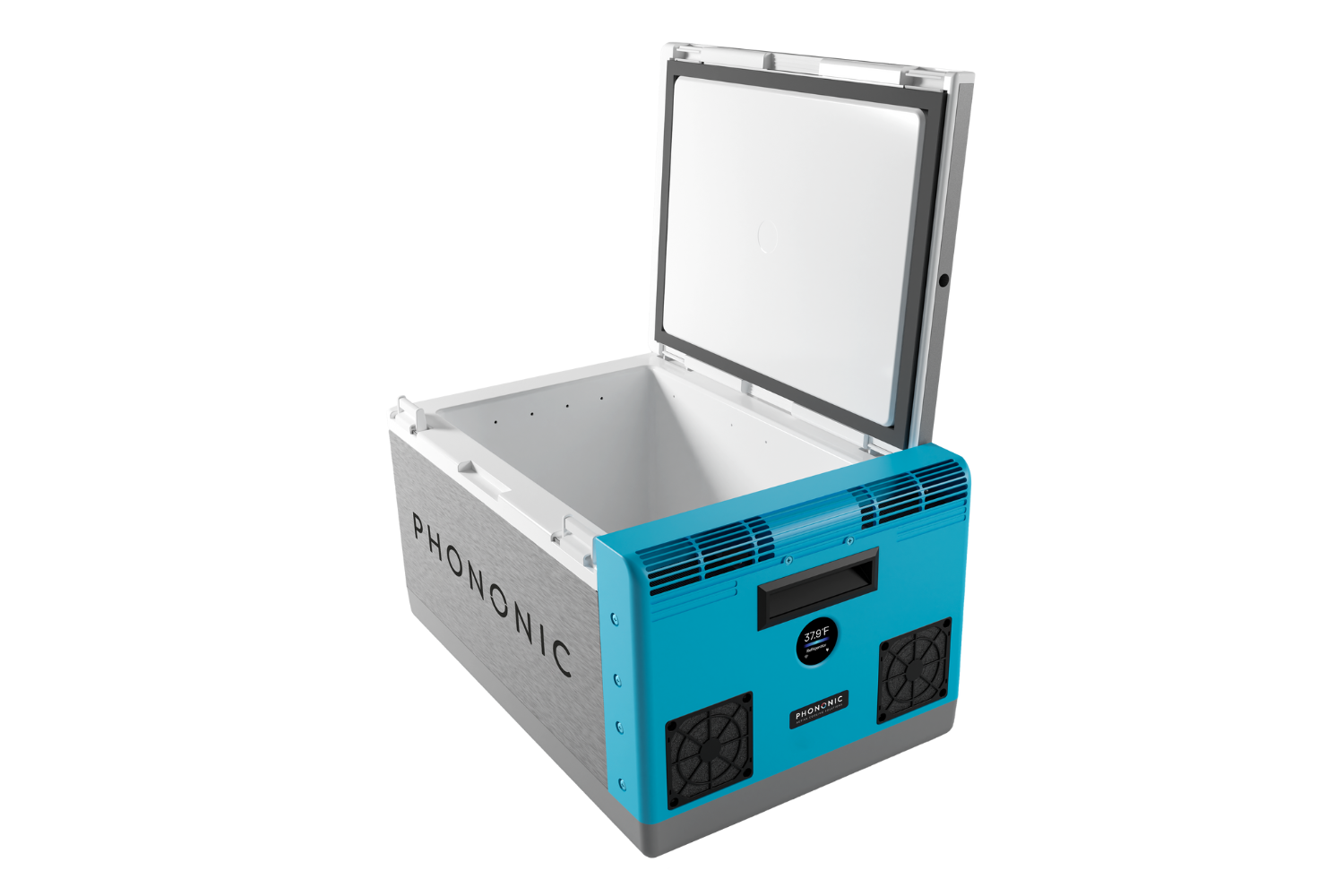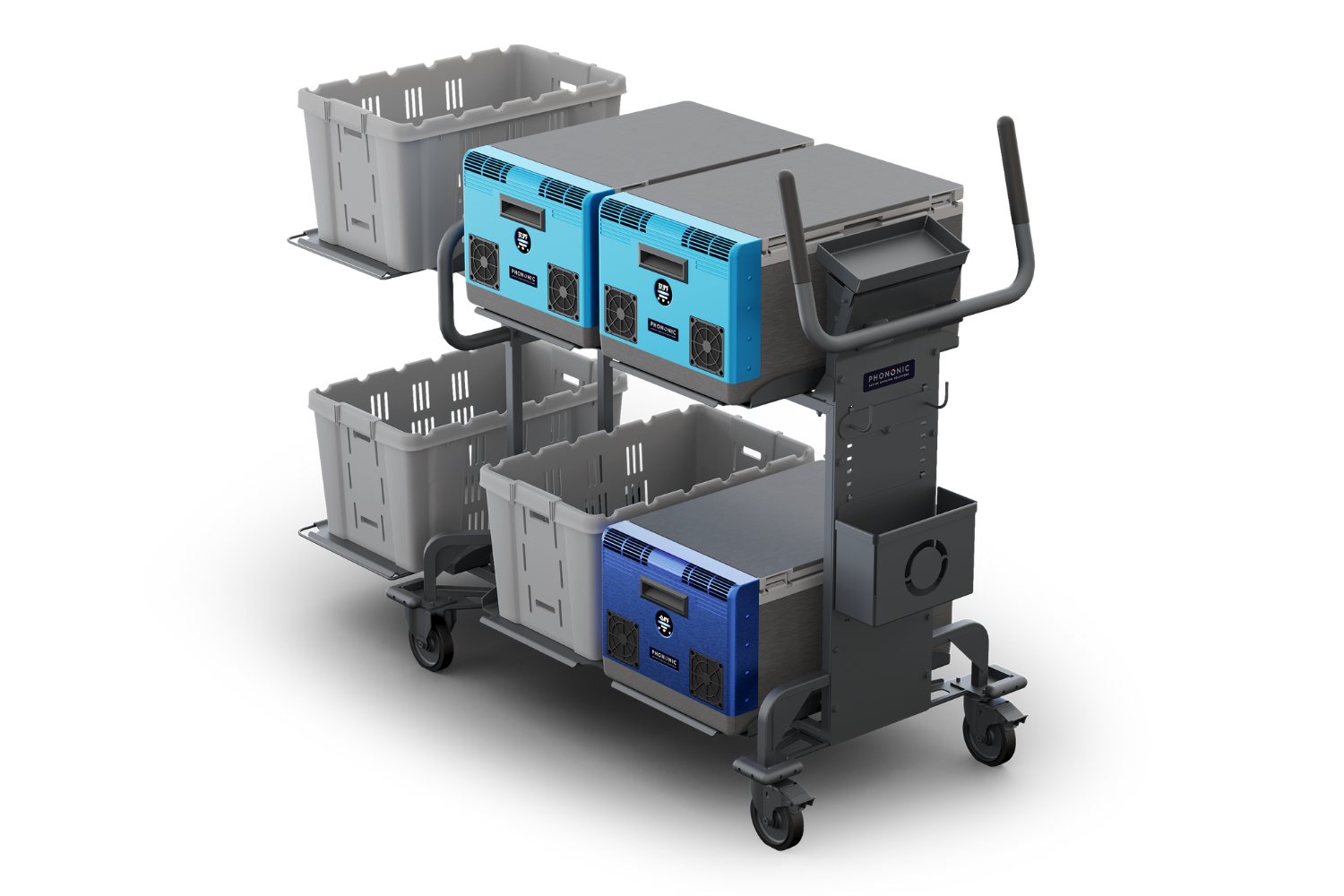
(Image: Franki Chamaki/Unsplash)
The refrigerant gases commonly used to keep the freezer and cold sections of grocery markets at the right temperature contain hydrofluorocarbons, chemicals that can be hundreds to thousands of times more powerful greenhouse gases than carbon dioxide. Consequently, federal and state governments are seeking to regulate their use, which could mean big changes for a lot of businesses. In response, some of the largest grocery chains in the country are switching to natural refrigerants — like ammonia, carbon dioxide and propane — to reduce their environmental impact.
Phononic, a company specializing in heating and cooling technology, developed a cooling option that doesn’t use refrigerants, and it appears to be well suited for an increasingly popular form of grocery shopping: curbside and delivery orders.
“The problem with e-commerce purchasing, particularly online for pickup and delivery, is the grocer can’t predict your behavior and that makes warehousing particularly problematic,” Tony Atti, co-founder and CEO of Phononic, told TriplePundit. “The minute they build a fixed, refrigerated or frozen warehouse, they’re either using a small percentage of their capacity or exceeding the capacity, and they have no flexibility.”
The company is named for a solid-state cooling process that doesn’t rely on moving parts or fluids like traditional refrigeration systems. Instead, it utilizes the principles of thermoelectricity to transfer heat away from an object or space. Phononic created moveable freezer and refrigerator totes for picking and storing online orders while saving space in-store. This technology is more sustainable and cost-effective because it doesn’t use traditional refrigerants and the totes’ temperatures can be customized, so stores are only cooling products that need to be and aren’t cooling empty totes.

Traditional freezer and cooling systems involve mechanical compressor-driven pumps that use the expansion and contraction of refrigerant gases to generate coldness and blow that coldness across a surface to cool it, Atti said.
“Thermoelectric, semiconductor cooling is a complete inverse,” Atti said. “We pull heat out as opposed to pushing cold in. When you do that, you have a very elegant, very uniform, and consistent level of temperature — as compared to the mechanical, sort of, brute-force method.”
With grocery stores of all sizes establishing or scaling online purchasing platforms for their customers, the dilemma is twofold, Atti said.
“You don’t want to mess up the in-store purchasing experience for people that like to go to the store,” Atti said. “Instead, the grocer has to take a portion of the real estate and dedicate it to fulfillment, which is a fancy word for ‘Where do we pack your order?’”
The fulfillment area needs its own sets of refrigerators and freezers for goods that need to be kept cool, Atti said. Those are often fixed, expensive, unsustainable, and require separate power from the rest of the store.
Phononic’s totes, on the other hand, are part of an “ecosystem of accessories, racks, carts and data monitoring” that tells the grocer where the order is at every point of the fulfillment cycle, Atti said.

“So, the grocer now has an incredibly flexible allocation of their space that can accommodate orders in real-time as opposed to a fixed ordering capacity using the legacy technology,” Atti said.
Phononic’s freezer and refrigerator totes can deliver energy savings from 30 to 70 percent over fixed, stationary refrigerator units, he said. In many cases, grocers also saw labor savings of 50 to 60 percent.
“Then at the same time in several stores, we’re seeing significant incremental revenue growth from just that fulfillment area,” Atti said. “It’s a really unique way to impact three significant areas of operation: first sales, then labor, and third, the infrastructure footprint or, more directly, the energy bill.”
But solid-state cooling technology has its limitations, including lower cooling capacities compared to traditional methods and higher costs for certain applications. Phononic and other companies are conducting ongoing research to overcome these limitations and expand the use of solid-state cooling in multiple fields, including electronics, medical devices and consumer appliances.

Gary E. Frank is a writer with more than 30 years of experience encompassing journalism, marketing, media relations, speech writing, university communications and corporate communications.














